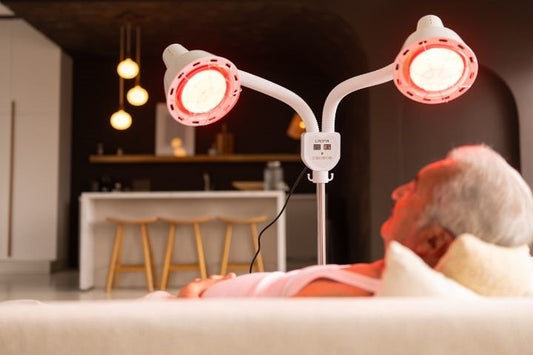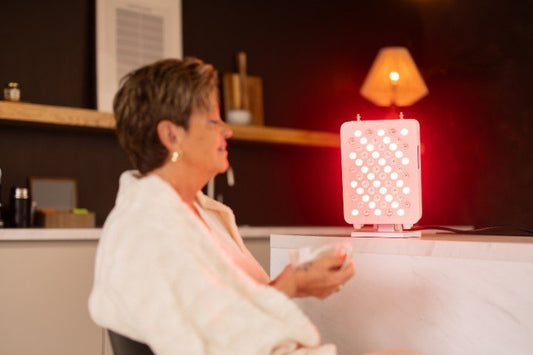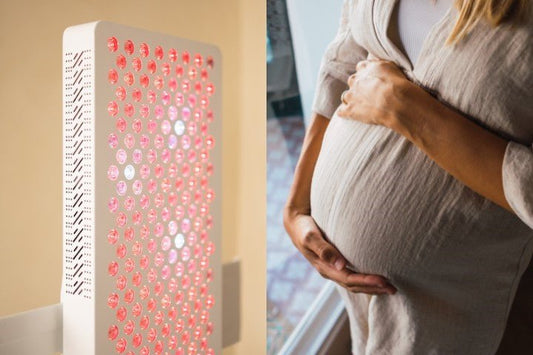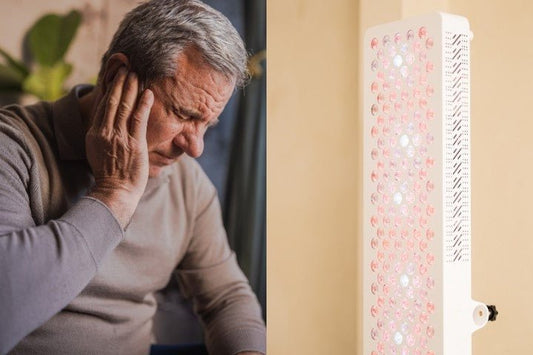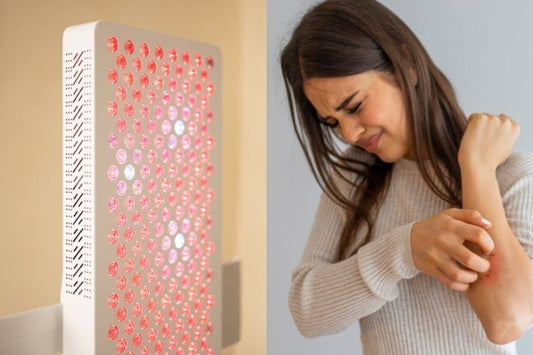Red light therapy has grown rapidly in popularity over the past few years. But did you know that this form of light therapy has a rather unique origin? The discovery and development of red light therapy can be traced back to none other than NASA.
Disclaimer: This article is not intended as medical advice. It is based on our own knowledge, customer experiences, and various online sources.
The Science Behind Red Light Therapy
Common Uses of Red Light Therapy
Is It Effective and Safe?
Summary: From NASA to Your Skin
How NASA Discovered Red Light Therapy
In the 1990s, NASA began exploring how light therapy could support wound healing in space. Astronauts often experienced delayed healing and muscle atrophy during long missions. One major cause? A lack of natural sunlight, something that normally supports healthy cell activity and recovery.
Researchers discovered that specific wavelengths of red and near-infrared light could stimulate cell growth and partially compensate for the sunlight deficit. Originally developed to help plants grow in space, this technology turned out to be just as fascinating for human cells.
This marked the beginning of NASA red light therapy research, which later sparked a wave of studies into its medical and wellness applications.
The Science Behind Red Light Therapy
So, what exactly is red light therapy and how does it work? The treatment involves exposing your body to red or near-infrared light. These wavelengths penetrate deep into the skin and activate the mitochondria, the energy centers of your cells, to produce more ATP (cellular energy). This can promote cell repair, reduce inflammation, and improve blood circulation.
The science behind red light therapy is now well-documented through infrared research and clinical studies. It's even being used in trials for pain relief, wound healing, and various skin conditions.
The link between NASA and red light therapy paved the way for broader acceptance of this method in both medical and cosmetic fields.
Common Uses of Red Light Therapy
Red light therapy is now used for a wide range of purposes. For example, it is used for skin improvement, muscle recovery and joint problems. Here are some of the most common applications:
- Skin rejuvenation, including reducing acne, pigmentation, scars, fine lines, and wrinkles
- Muscle recovery after physical activity
- Pain relief for joint problems, such as arthritis or rheumatic pain
- Improved circulation and support for tissue repair
- Better sleep and reduced stress
Whether used at home or in professional settings, red light therapy is increasingly recognized for its versatility and non-invasive nature.
Is It Effective and Safe?
Many people ask: does red light therapy really work, and is it safe? Most red light therapy experiences are very positive. Users report less pain, clearer skin, and quicker muscle recovery. Scientifically, it’s considered safe, as long as it’s used properly and consistently.
It’s also important to understand the difference between red light and infrared light. This guide explains the distinction clearly.
Summary: From NASA to Your Skin
The journey of red light therapy science is nothing short of remarkable. From the high-tech labs of NASA to the modern wellness industry, the technology has proven itself through extensive research.
Thanks to the pioneering efforts of red light therapy NASA studies, we now have a safe and effective method for skincare, pain relief, and overall health support. Whether you're seeking smoother skin or faster muscle recovery, red light therapy may be well worth considering.






